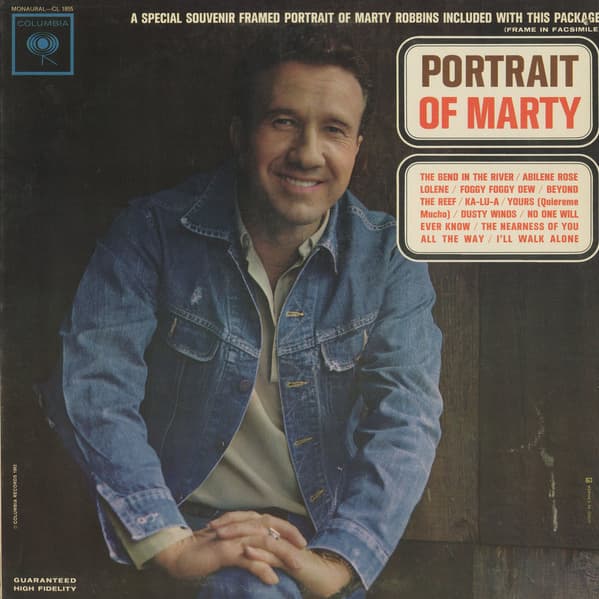
The harsh beauty of the American West captured in a solemn reflection on survival and enduring love through hardship.
There is a quiet dignity to the forgotten corners of Marty Robbins’ legendary songbook, a vast landscape often overshadowed by the high-drama gunfights of “El Paso” or the catchy pop of “A White Sport Coat.” It is in these dusty, less-traveled trails that we find the true soul of his Western storytelling, and few songs convey that profound sense of endurance quite like “Dusty Winds.” Released in 1963, this solemn ballad wasn’t a soaring chart-topper—it was an essential track on his evocative album, The Return of the Gunfighter. While singles from his western repertoire often captured the spotlight, “Dusty Winds” played its part in establishing the atmosphere of the album, reminding listeners that the West was as much about harsh reality as it was about romanticized myth. It was the deep cut that cemented his reputation as the quintessential singing cowboy, a master of mood and narrative.
The story behind “Dusty Winds,” written by J. and not Robbins himself, is less about a dramatic duel at high noon and more about the quiet, relentless struggle of the ranching life. It is a portrait drawn from the parched earth of the American Southwest during a time of relentless drought. The song acts as a musical monologue, where the narrator speaks of the immense difficulty of survival when the land itself turns against you. He describes the cattle suffering, the crops failing, and the constant, abrasive presence of the wind that literally and figuratively wears everything down. The phrase “dusty winds” is a double-edged sword: it represents the physical hardship—the ceaseless erosion of topsoil and hope—but also the inevitable march of time and the trials that test the bedrock of a man’s character and, crucially, his marriage.
The true, deep meaning of “Dusty Winds” lies in the narrator’s unwavering focus on his relationship. Despite the utter desolation of his surroundings, the man finds his ultimate strength and solace in his wife. The lyrics poignantly contrast the barren external world with the fertile, resilient love within his home. Where the land is dry and cracking, their bond remains firm. It’s an emotional narrative that resonates powerfully with older readers, those who understand that life isn’t a series of easy victories, but a persistent grind punctuated by the few relationships that truly matter. It evokes the memories of simpler, tougher times, where faithfulness and resilience were the only currency you needed to survive.
Marty Robbins’ smooth, slightly melancholy baritone is the perfect vehicle for this kind of reflection. He doesn’t sing the song with anger or despair, but with a weary, knowing acceptance, making it feel less like a performance and more like a shared moment around a flickering campfire. The production, with its gentle, echoing guitar work and subtle harmonies, creates an expansive, lonesome feeling that perfectly mirrors the desolate landscape the lyrics describe. It is a song that doesn’t shout its importance; it simply is—a quiet testament to the fortitude of the human spirit when faced with nature’s most brutal challenges, finding the green shoots of hope in the heart when the fields turn to dust.